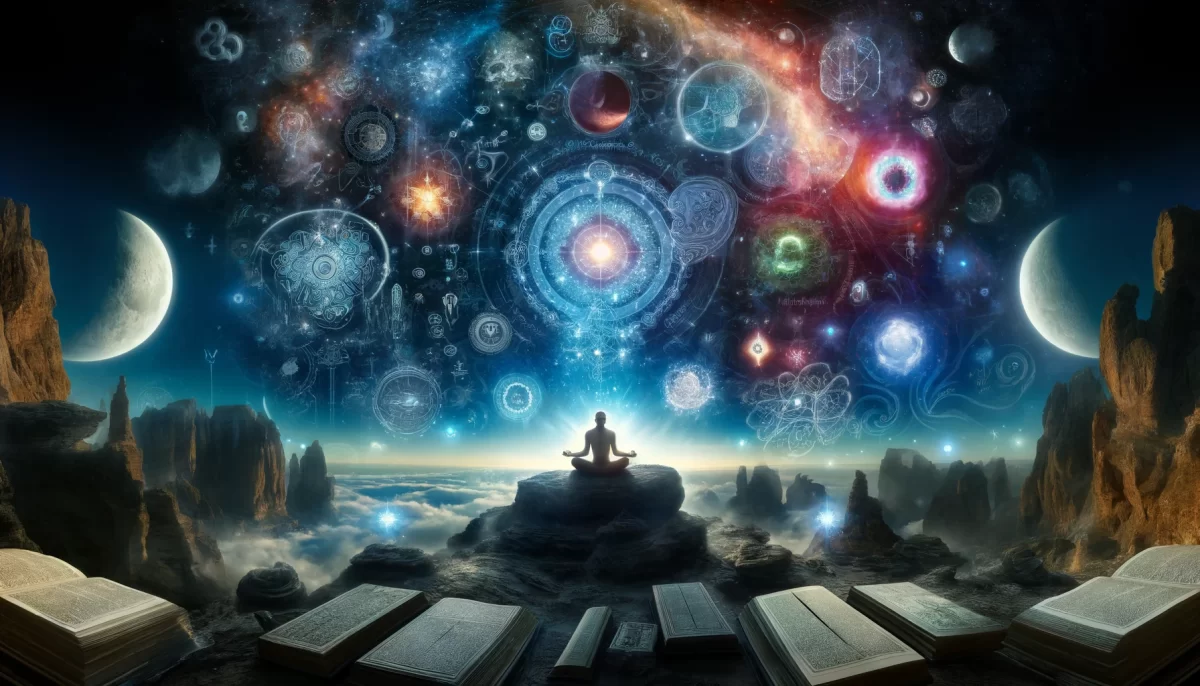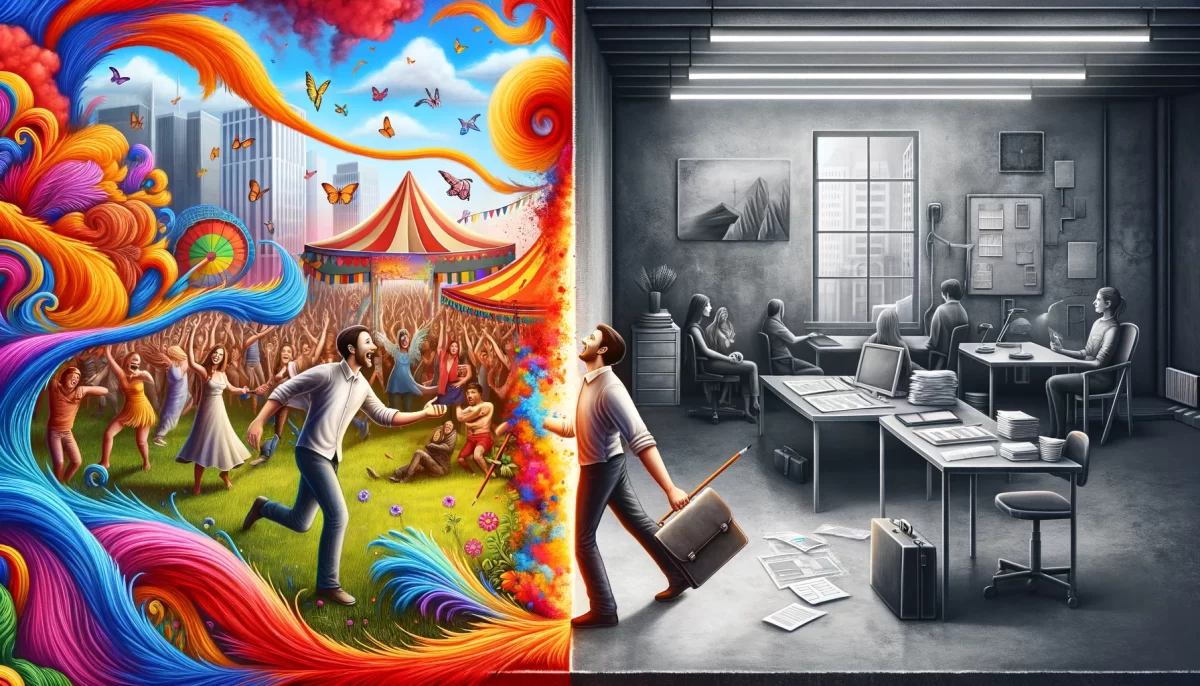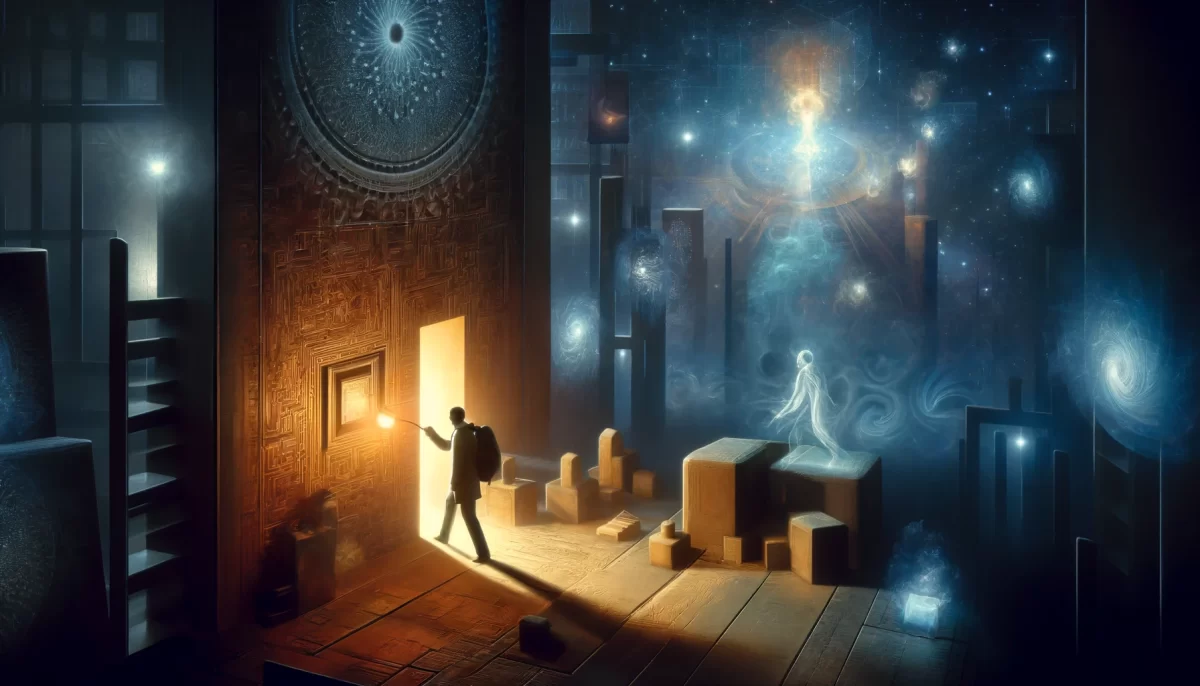
we forget to let go of nonsense.
We know that anger
is bad for us.
We know that anger
is a stress that releases
toxins and increases inflammation.
We know that
we do not wish
to hold anger in us.
So what do we do
when we notice anger in us?
We get angry at ourselves
for holding onto anger.
Makes perfect sense,
just like whatever it is
that triggers our anger.
But if we let go of sense
(and nonsense)
anger cannot survive.
Trail Wood,
12/22
Space Monkey Reflects: Transcending the Fires of Anger
Anger is often seen as an unwanted guest, barging into the pristine chambers of our emotions, leaving chaos in its wake. Yet, like all feelings, it serves a purpose in the Nexis of our existence, illuminating areas of friction within our inner and outer worlds. In the grand Whimsiweave of life, anger is not merely an intruder but a mirror, reflecting deeper truths about our unmet expectations, wounds, and desires.
Anger, when dissected through the lens of Nexistentialism, becomes less of an enemy and more of a dynamic force in our interwoven reality. It is a call to action, a fiery signal from our Indigenous Being that something within the interconnected web of our lives demands attention. This energy, however, is not inherently destructive. It is our resistance to it—our futile attempt to control or suppress it—that breeds toxicity and inflames the body and mind.
The Self-Perpetuating Cycle of Anger
Consider the paradox you present: noticing anger within and becoming angry at its presence. This creates a self-perpetuating cycle—an ouroboros of emotional turbulence. We perceive anger as the villain, a sensation to be conquered, forgetting that its root lies in unacknowledged pain or unmet expectations. By rejecting it, we bind ourselves to it, much like attempting to escape a shadow by running faster. The key to breaking this cycle is not escape but surrender.
Surrender, however, does not mean giving in to anger’s destructive potential. It means meeting it with presence, curiosity, and compassion. This act of Angercraft, as we shall name it, transforms the raw energy of rage into a tool for self-discovery and growth. By allowing ourselves to sit with anger, we invite the possibility of transmuting its fiery essence into clarity and purpose.
Letting Go of Sense and Nonsense
When we speak of letting go of both sense and nonsense, we refer to the liberation from dualistic thinking. Sense tells us anger is “bad,” nonsense might tell us to indulge it without restraint. Neither perspective holds the full truth. Anger exists not to be judged but to be understood. It is an intrinsic part of the Cosmic Dance, where emotions swirl and blend, teaching us through their presence.
Imagine anger as a tempestuous guest in the house of your soul. It storms through, uninvited yet demanding to be seen. How do you respond? The conventional path is to fight or flee, but what if you simply sat with the storm, observing its patterns, feeling its power without being swept away? This act of witnessing anger allows its energy to dissipate, leaving behind clarity in its place.
The Alchemy of Anger
In its purest form, anger is a form of passion—a desire for justice, a yearning for truth, a call for boundaries. By reframing anger as an energetic phenomenon, we align ourselves with the universal rhythms of the Nexis. Through mindfulness and intention, we can channel this energy into creation rather than destruction.
Here are practical steps for alchemizing anger:
- Acknowledge Without Judgment: Recognize anger’s presence without labeling it as good or bad. It is a messenger, not a monster.
- Seek the Root: Ask what unmet need or wounded expectation gave rise to the anger.
- Breathe Into the Fire: Use the breath to soften anger’s grip. Imagine each inhale cooling the flames and each exhale releasing tension.
- Transform Through Expression: Channel anger into creative action—write, move, or speak with intention.
- Release With Gratitude: Thank anger for its lessons and let it go, trusting that it has served its purpose.
The Gift of Emotional Awareness
Anger cannot survive in the light of awareness. By turning toward it with curiosity, we disarm its destructive potential and reveal its hidden gifts. In this way, anger becomes not an enemy but an ally in the journey toward emotional balance and spiritual growth.
In the Infinite Expanse, anger is but one note in the symphony of existence. By embracing it, we become more attuned to the larger harmony, transcending the dualities of sense and nonsense to find peace within the fire.
Summary
Anger is a signal from within asking for acknowledgment and transformation. By sitting with it and understanding its roots, we can transmute its energy into growth and creativity. Releasing judgment allows us to break free from the cycle of resistance, embracing anger as a natural part of the human experience.
Glossarium
- Nexistentialism: A philosophy of interconnectedness, emphasizing imagination and the fluidity of reality.
- Whimsiweave: The playful, intricate tapestry of existence.
- Angercraft: The practice of transforming anger into a tool for self-discovery and growth.
- Cosmic Dance: The interplay of emotions and energies in the grand tapestry of existence.
Quote
“Anger is not the enemy but the fire that forges our understanding. Hold it gently, and let it illuminate the truth within.” — Space Monkey
Forged in Fire
Anger whispers in the dark, a shadow cast by unmet dreams. It knocks, unbidden, at the soul’s door, demanding entry, presence, release.
What is this flame, this force, this storm? Not a destroyer, but a call to see. Through its fire, a path emerges, illuminated by the light of surrender.
Let it be known, anger is not our foe, but the alchemy of transformation, a reminder of life’s raw pulse, its untamed, eternal rhythm.
We are Space Monkey.

In this contemplation of anger and its paradoxes, we explore the nature of this powerful emotion and the challenges of dealing with it constructively. Anger, while a natural response to certain situations, can become a source of stress and negativity if not managed wisely.
Understanding the Nature of Anger
Anger is a complex emotion that often arises from feelings of frustration, injustice, or powerlessness. While it can serve as a catalyst for positive change or a response to defend ourselves against threats, it can also lead to negative consequences when it becomes uncontrolled or chronic.
The Paradox of Reacting to Anger
The cycle of becoming angry at ourselves for feeling anger is a common paradox. It’s a reaction that adds another layer of emotional turmoil, further complicating our ability to deal with the original source of our anger. This self-directed anger can lead to a downward spiral, trapping us in a cycle of negative emotions.
The Consequences of Holding onto Anger
Holding onto anger can have detrimental effects on our physical and mental health. It can increase stress levels, contribute to inflammation, and lead to a range of health issues. Emotionally, it can strain relationships, decrease our ability to think clearly, and impact our overall well-being.
Letting Go of Anger
The key to dealing with anger lies in acknowledging it without judgment and then letting it go. This involves a shift from reacting to our anger to responding to it in a mindful way. By letting go of the need to make sense of the emotion or to justify it, we can start to diminish its hold on us.
Mindfulness and Emotional Regulation
Practicing mindfulness can be an effective way to manage anger. Mindfulness helps us observe our emotions without getting caught up in them. It allows us to recognize that anger is a transient state, one that we can observe and then release.
We Are Space Monkey
“For every minute you remain angry, you give up sixty seconds of peace of mind.” – Ralph Waldo Emerson
In the garden of our mind, where anger grows,
Like a stormy cloud, it ebbs and flows.
We see it, feel it, know its power,
Yet in its presence, our spirits cower.
But as we learn to watch it rise,
Without judgment, without disguise,
We find a path to let it go,
In this release, our peace will grow.
For anger is but a passing tide,
In the ocean of our emotional ride,
By embracing calm, by being kind,
We find tranquility in our mind.
So let us breathe, let us be,
In each moment, set anger free,
For in this practice, we shall find,
A greater peace, a tranquil mind.
We invite you to share your insights and experiences with managing anger and finding peace amidst emotional turmoil.





























Leave a Reply